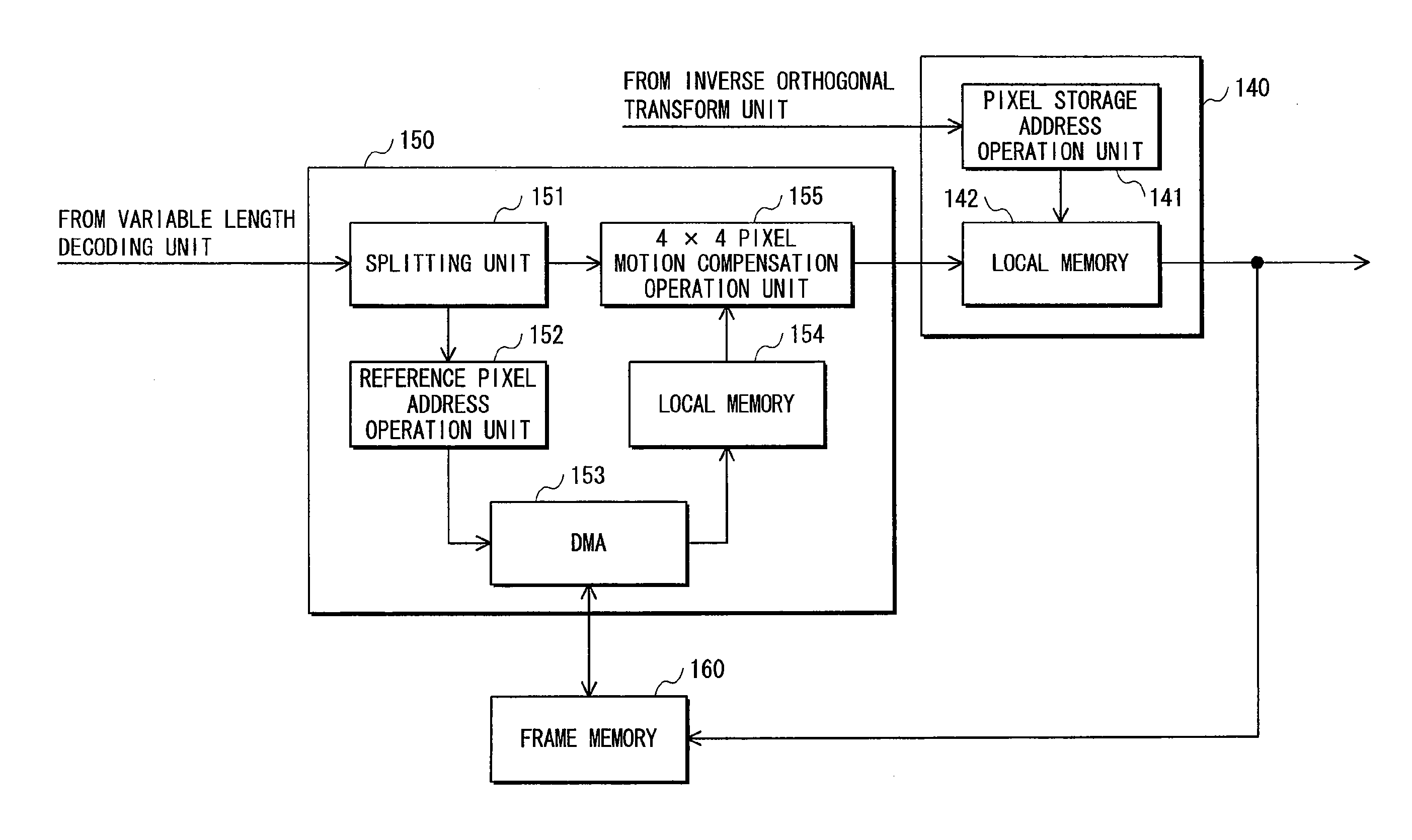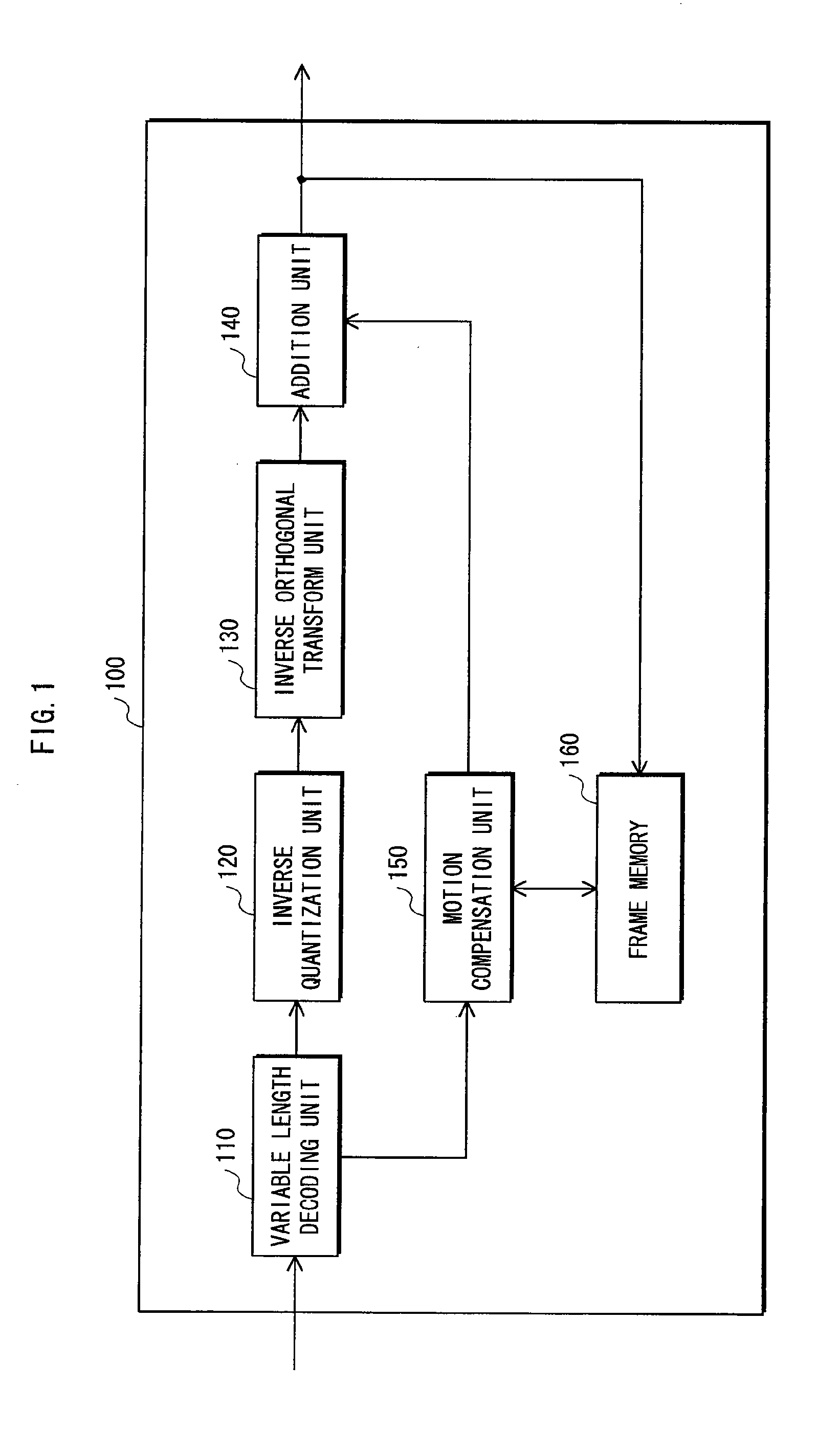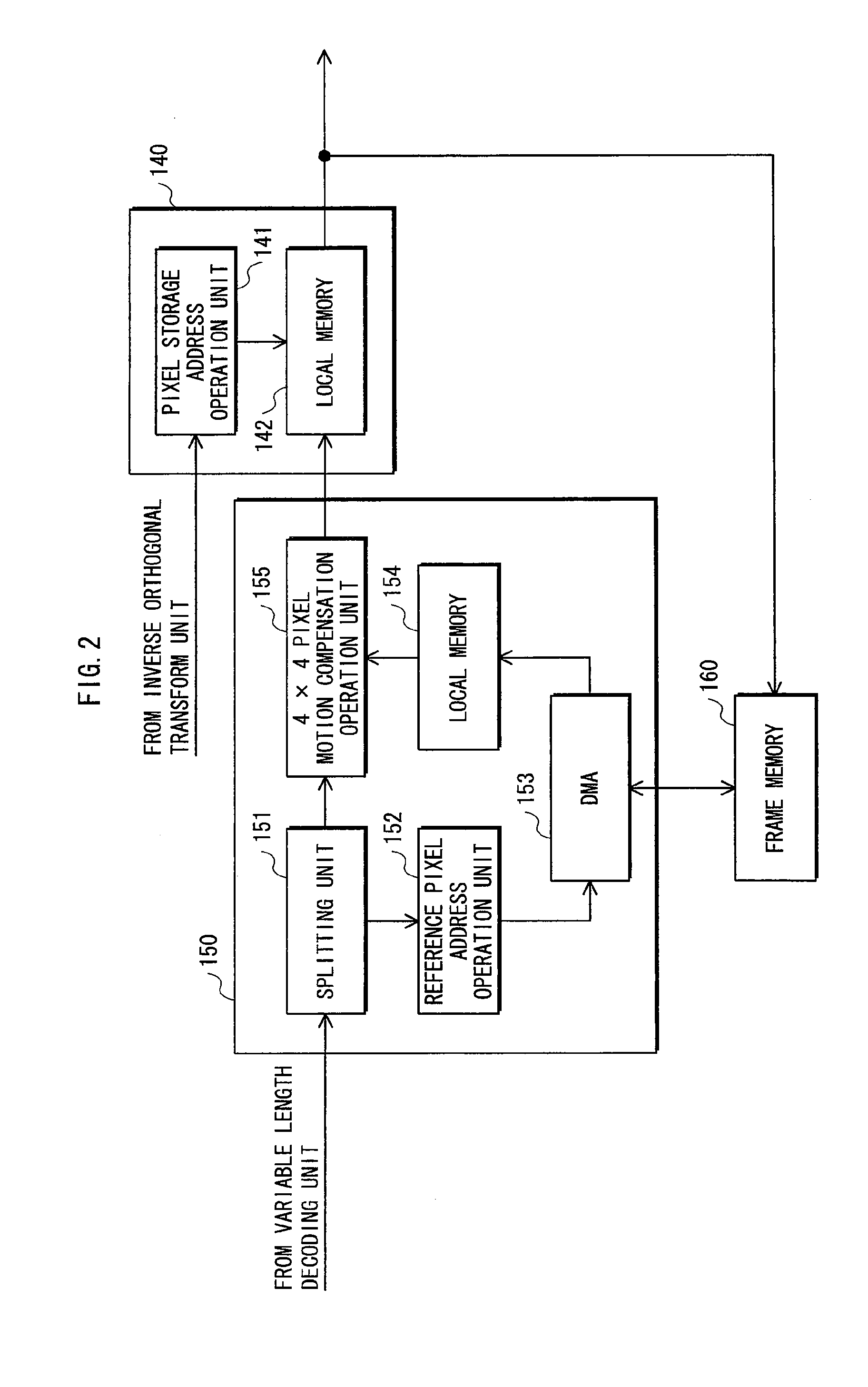Video decoding device, video decoding method, video decoding program, and video decoding integrated circuit
a video decoding and video data technology, applied in the direction of signal generators with optical-mechanical scanning, color televisions with bandwidth reduction, etc., can solve the problems of unsatisfactory consumption of memory capacity, increased cost and installation space, and achieve fewer design man-hours and less memory capacity
- Summary
- Abstract
- Description
- Claims
- Application Information
AI Technical Summary
Benefits of technology
Problems solved by technology
Method used
Image
Examples
first embodiment
Construction
[0046]First, a functional composition of the video decoding device of the present invention is described with reference to FIG. 1 and FIG. 2.
[0047]FIG. 1 is block diagram showing the functional composition of a video decoding device 100. As shown in FIG. 1, the video decoding device 100 is composed to include a variable length decoding unit 110, an inverse quantization unit 120, an inverse orthogonal transform unit 130, an addition unit 140, a motion compensation unit 150, and a frame memory 160. The units perform decoding based on the conventional MPEG-4AVC standard, and descriptions of processing identical to conventional processing have therefore been simplified.
[0048]The variable length decoding unit 110 includes a function for decoding inputted variable length signals to calculate quantization coefficients and motion vectors.
[0049]The inverse quantization unit 120 includes a function for performing inverse quantization on quantized data to recover the frequency comp...
second embodiment
[0112]A second embodiment of the present invention enhances the usefulness of the video decoding device by supporting 8×8 pixel sub-blocks in addition to the 4×4 pixel minimum blocks described in the first embodiment.
[0113]More specifically an 8×8 pixel motion compensation operation unit supports block sizes of 8×8 pixels or larger and a 4×4 pixel motion compensation operation unit supports the three block sizes of 8×4 pixels, 4×8 pixels, and 4×4 pixels. This enhances the usefulness of the device as a video decoding device because processing speeds can be increased. For the 8×8 macroblock, in particular, the processing to split the macroblock in the splitting unit can be omitted, which allows for an increase in processing speed.
Construction
[0114]Differences between the first and second embodiments are described with reference to FIG. 10. Functional units not described can be assumed to work in the same way as those of the first embodiment. Since the units of the construction which d...
third embodiment
[0135]The third embodiment of the present invention differs from the first embodiment in that pixel data for the reference frame region which is the object of the motion vector is moved from the frame memory to a local memory prior to motion compensation.
[0136]This has the advantageous effect of increasing processing speed because, rather than having to acquire the reference pixel data from the frame memory upon every 4×4 pixel motion compensation operation, the DMA unit acquires the reference pixel data from the local memory which can be searched more easily.
Construction
[0137]As shown in FIG. 14, the third embodiment differs from the first and second embodiments in the inclusion of two reference pixel address operation units.
[0138]The reference pixel address operation unit 1452 functions similarly to the reference pixel address operation unit 152 of the first embodiment and the reference pixel address operation unit 1052 of the second embodiment. The reference pixel address operati...
PUM
 Login to View More
Login to View More Abstract
Description
Claims
Application Information
 Login to View More
Login to View More - R&D
- Intellectual Property
- Life Sciences
- Materials
- Tech Scout
- Unparalleled Data Quality
- Higher Quality Content
- 60% Fewer Hallucinations
Browse by: Latest US Patents, China's latest patents, Technical Efficacy Thesaurus, Application Domain, Technology Topic, Popular Technical Reports.
© 2025 PatSnap. All rights reserved.Legal|Privacy policy|Modern Slavery Act Transparency Statement|Sitemap|About US| Contact US: help@patsnap.com



